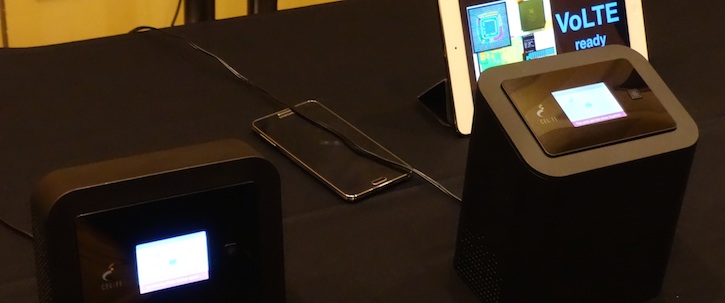
Cord cutting is easy if you live in a signal rich environment. Or at least easier – anyone who has experienced the frustration of trying to make a mobile call from an interior room in a central business district hotel knows it isn’t a slam dunk. But once you move out into suburban and rural areas, reliable indoor phone and Internet service usually means keeping the wire. (And yes, I know, fixed wireless is a potential solution, but usually not – at least according to the FCC.
Even where mobile networks provide adequate coverage for outdoor use, reaching people inside homes and businesses becomes problematic has – the company’s founder, Werner Sievers, says – solved that problem for developing world markets. Now, he wants to bring it to the U.S., first for cord cutters but ultimately as fixed infrastructure for wearables.
The basic product consists of two units – one located where it can capture a mobile signal – even as weak as 1 bar or less – and the other positioned for maximum coverage of about 13,000 square feet inside a home or office building. The key hurdle Sievers says they’ve overcome is latency, reducing the delay caused by adding 2 hops and signal processing to the transmission path to 20 microseconds or less.
It’s not cheap. The 3G unit is $575 and the soon-to-be launched LTE version is $700. But it is technology intended for mobile networks, which is an industry that understands trading equipment subsidies for service subscriptions.
Right now, wearables like the Fitbit depend on a smart phone for connectivity and networked processing power – either from the phone itself or via its link to a remote server. For now, it’s a drag on adoption – your choice of wearables depends in the first instance on your choice of smart phone. An alternate, vendor-neutral path, like that provided by Nextivity, will turbocharge adoption and create a new business model for mobile operators and wearable manufacturers to pursue.
